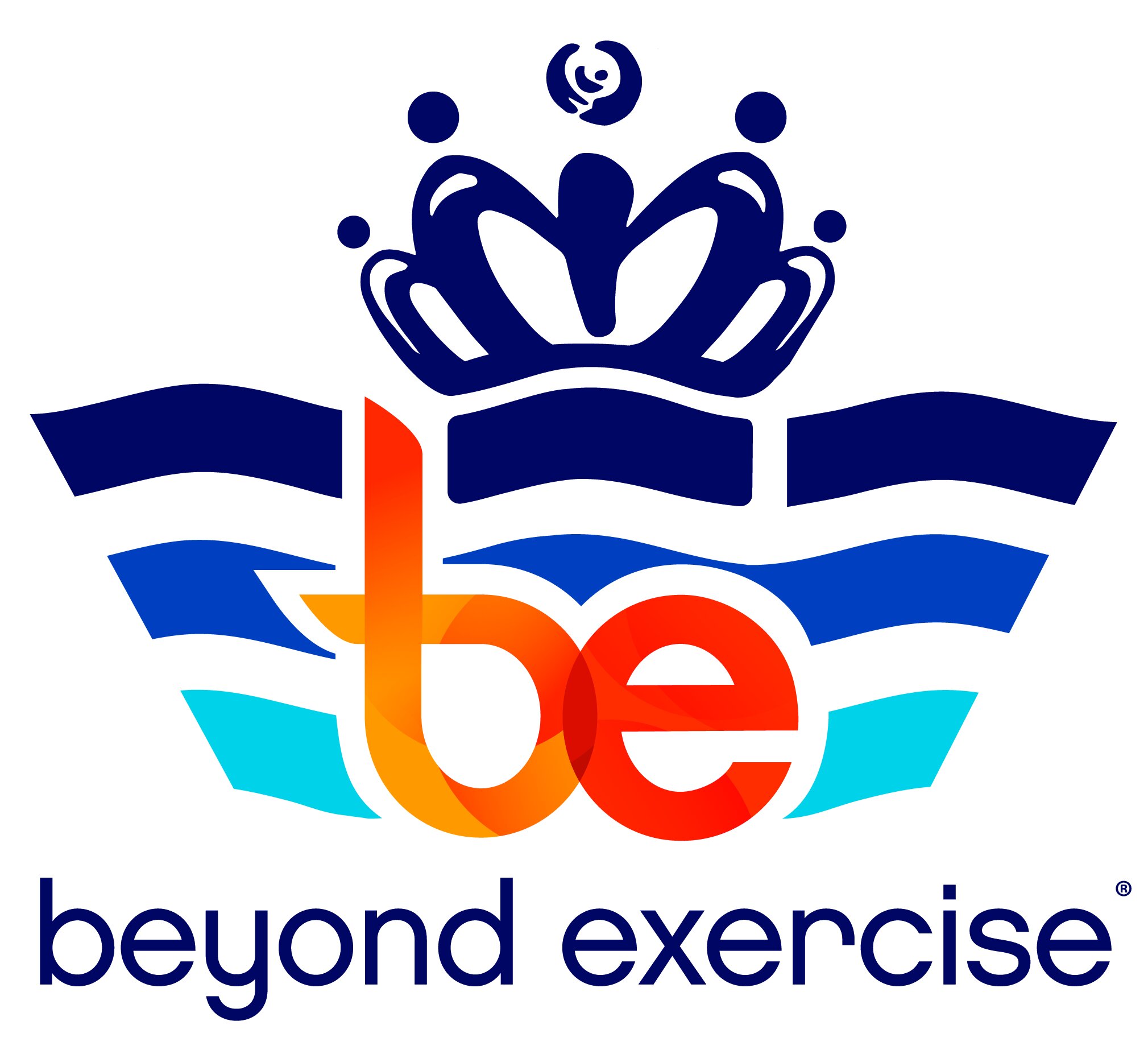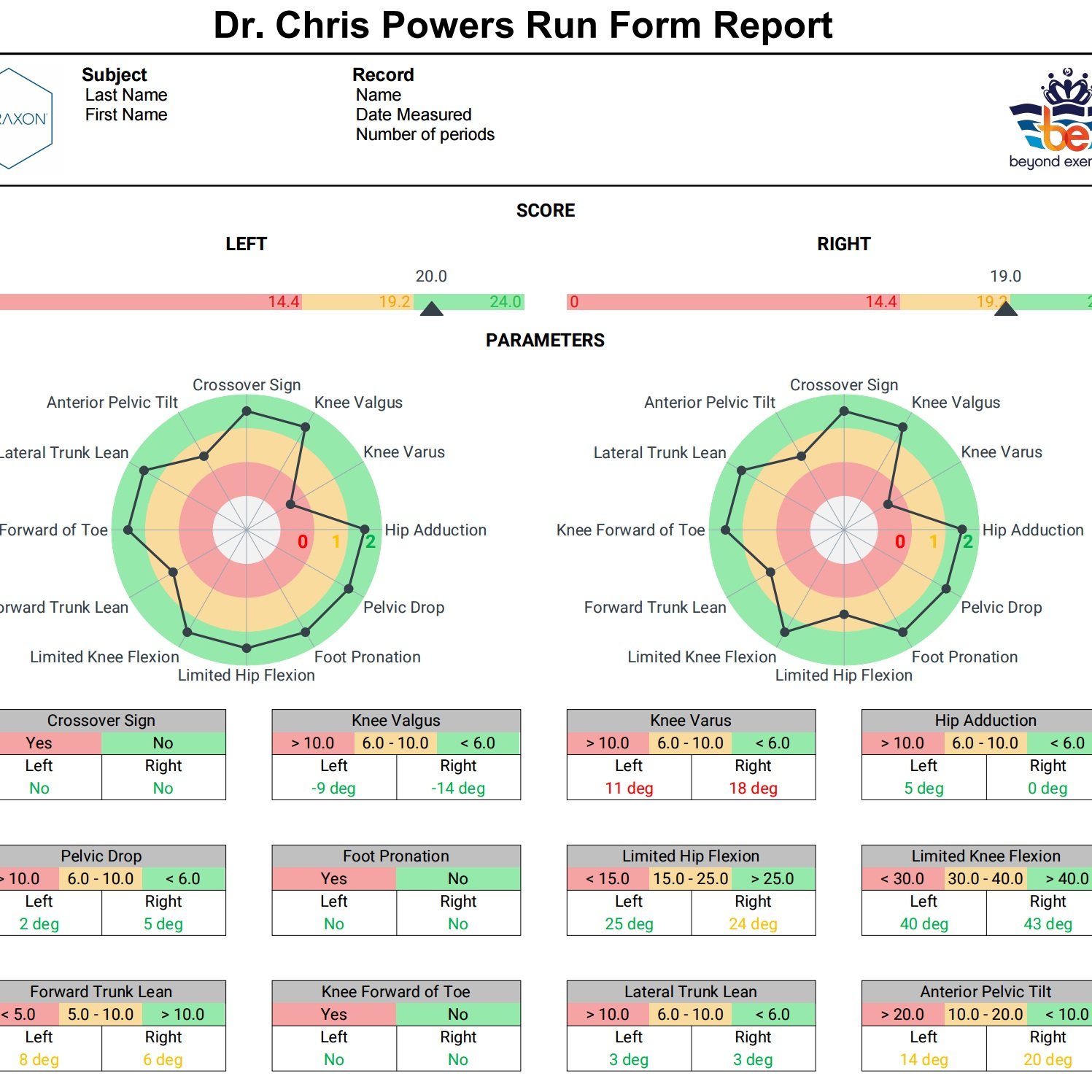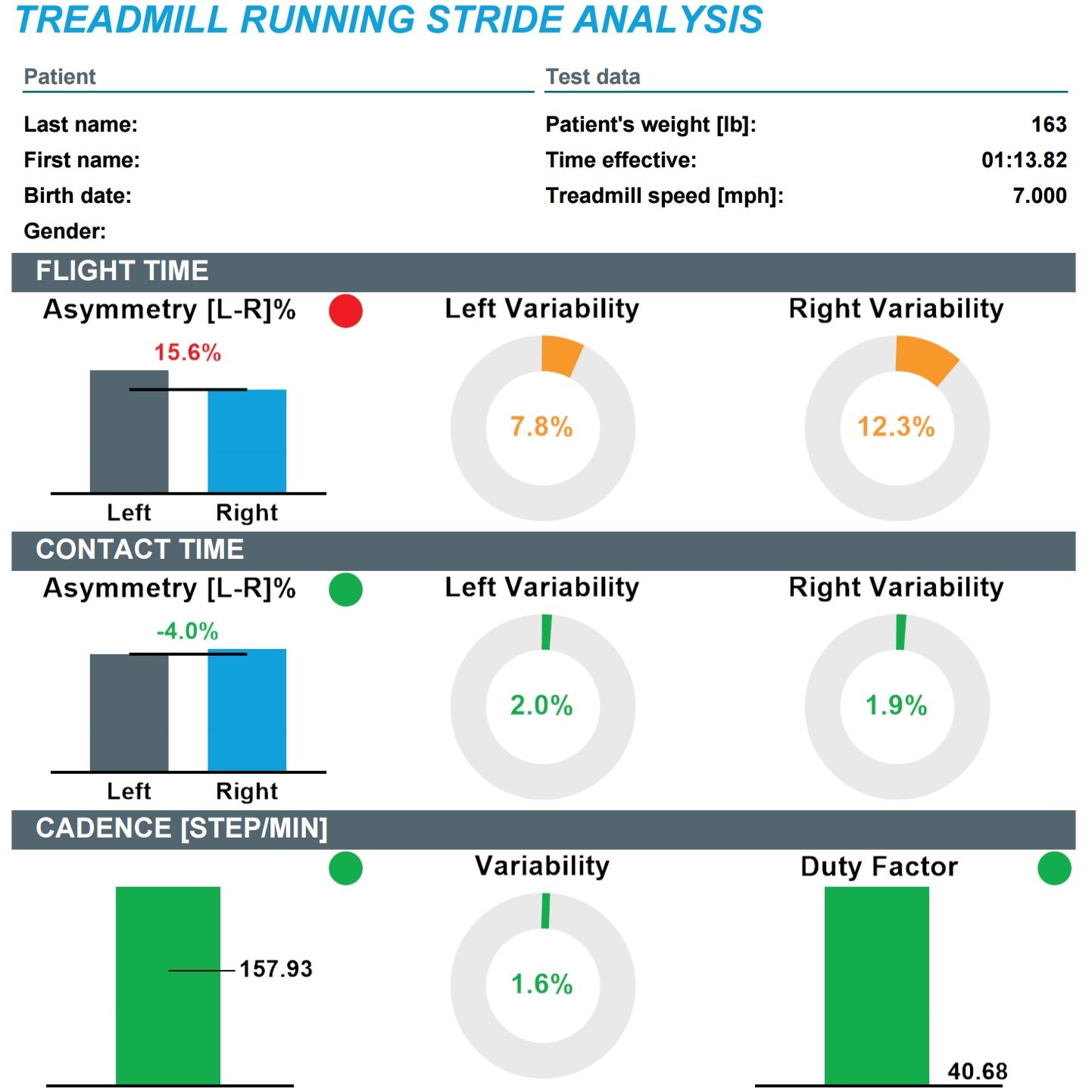Run Form & Stride Analysis
Would you like to avoid a running injury while training? How about improving your running pace without working harder? Or if you’re injured, would you like to determine if your running form is part of the cause?
Begin your journey of becoming a better runner by identifying your running asymmetries and faults in body position!
We like to think of a Run Form & Stride Analysis test as an MRI of your running form - this data provides us with a full picture of a runner's movement inefficiencies and asymmetries. This is important for any runner to know in order to significantly reduce the risk of injury and to improve their performance.
The assessment includes two reports: first is the form analysis with the Noraxon MR4 2D motion capture system. Second is the stride analysis with the Optogait optical sensors. (sample reports are listed to the right —>)
The form analysis includes a breakdown of important joint angles related to running, and compares this to a recommended range that has been thoroughly researched by some of the world’s leading researchers in running mechanics.
The 2D motion capture system automatically tracks the runner’s joint angles in real-time, analyzes these angles, and populates the findings into an easy-to-read report.
This system compares your joint angles to normative values obtained from years of research, providing you with detailed analysis of key joints. This information can then be used to make changes in your running form to positively impact your stride, overall efficiency and symmetry of movement that will lead to less risk of injury and faster running!
The stride analysis report includes a breakdown of flight time, contact time, and cadence. It further breaks down contact time into its three subphases: initial contact, foot flat, and propulsion. Lastly, it includes comparisons between the left and right sides. This provides insight into how optimized you are at moving your body through space.
*The Run Form & Stride Analysis does not include diagnosis of any specific underlying pathologies that may explain the findings in the reports, but there will be some general discussion depending on the findings. It also does not include instruction in corrective exercises or treatment plans. For those services, a follow-up with one of our Run Physical Therapists is highly recommended. Our therapists have extensive training in run analysis, corrective exercise instructions, run form coaching, and treatment of soft tissue & joint mobility restrictions & injuries.
Form Report
Sample Run Form report
Stride Report
Sample Run Stride report



